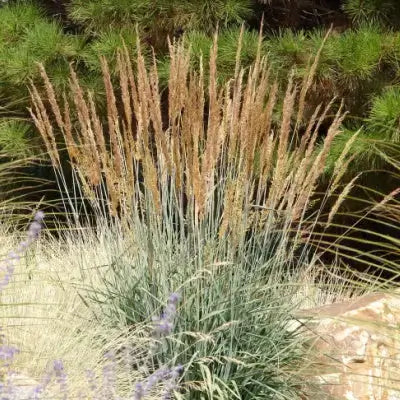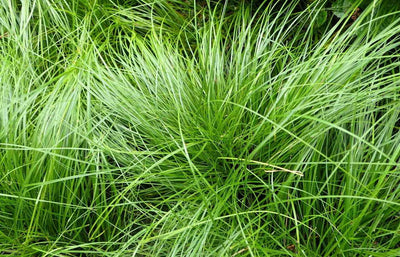The Enchanting Indian Grass: A Remarkable Native Grass for Your Garden
Indian Grass (Sorghastrum) is one of the many types of grasses found in the United States. Ecologically, it is planted for its admirable value in natural systems. This perennial grass grows to approximately 6 feet tall and offers aesthetic appeal as well as resilience. Undeniably, this ornamental plant is prized for its ornamental value.
Why is Indian Grass Unique?
Many consider its native roots pivotal to Indian Grass's charm. This particular species is widespread across the southern prairies, meadows, and natural grasslands of the Midwestern United States. It is known for its height, soft plume-like head, unique golden-brown color, and windswept foliage, all of which are especially noticeable in the fall. Grasslands of India are often adorned with this grass, and it is prized for its ornamental value.
How Your Garden Can Benefit from Indian Grass
The foremost benefit of Indian Grass is its low maintenance. It can withstand slightly tough conditions, thriving in various types of soils and both open and shaded areas. Once planted, it requires little or no work. Indian Grass fends for itself, provided it is watered during its establishment period. Such low maintenance is a boon for citizens who don’t wish to spend a significant amount of time on plant care.
Indian Grass is also non-invasive. It does not spread uncontrollably into other areas of the garden, and its natural spread is easy to control. It will renew your garden every year, making it look even prettier as it returns season after season. Additionally, Indian Grass is excellent for promoting wildlife conservation, and due to its sturdy stalks, it can withstand landing from larger insects like butterflies.
How to Grow Indian Grass
It takes little effort to plant Indian Grass. Whether from seeds or seedlings, it develops easily. Follow these tips, and it will feel right at home.
Pick a Suitable Area
Indian Grass loves the sun although some partial shade is tolerated. Loves sun is indeed correct; thrives in well-drained soils and also slightly moist in sandy or clayey soils. Never plant Indian Grass in wet soils since the plant has no bottom value.
Seed Grasses
Indian Grass grows well when planted in the spring or early summer. When seeding, make sure to space out seeds and clumps to allow for proper growth.
Transplanting
When transplanting, dig a hole big enough to fit the roots and place the clump inside. Ensure the soil around the clump is tightly packed.
Watering
Initial watering is essential. Make sure the grass is kept moist for the first 3 weeks. Afterward, the saplings become independent and use rainwater or well water.
Trimming and Maintenance
Keep in mind that Indian Grass can grow as tall as six feet and might need trimming, especially during bloom. Trimming should be done during late winter and early spring, before the new growth emerges.
Companion Plants of Indian Grass
Indian Grass looks delicate and lovely, especially when featured alongside other native plants in addition to flowering species. Notable companion native flowering species include the following:
Big Bluestem Grass (Andropogon gerardii)
Indian Grass has an excellent vertical companion in this grass. It, along with other native flowering species, brings verticality and fullness to the composition.
Purple Coneflower (Echinacea purpurea)
The blooms of this plant are described as vivid shades of purple. The flowering plants attract a range of different pollinators.
Black-eyed Susan (Rudbeckia hirta)
Another excellent partner to Indian Grass, Black-eyed Susan helps bring a layered composition to the garden.
With Indian Grass, Big Bluestem, Purple Coneflower, and Black-eyed Susan, your garden will be a delightful display for the eyes and attract pollinators in the warmer months. The garden will require minimal maintenance throughout the year.
Do You Want to Add Indian Grass to Your Garden?
Indian Grass is non-invasive and can be used to complete a native and very low-maintenance garden. It works well alongside other native plants and is ideal for wildlife-friendly gardens. Visit TN Nursery if you want Indian Grass or other native plants to add beauty and biodiversity to your garden. You can find a variety of native plants at your online nursery to enhance your garden. Shop now!
FAQs
How aggressive is Indiangrass?
Indian Grass is not aggressive. It is not an invasive species and will not take over your garden like some other grass types. However, over time, this plant will spread and may need to be trimmed to prevent it from overtaking. Indian Grass is perfect for gardeners seeking a low-maintenance option, as it does not require a lot of attention.
What are some interesting facts about Indiangrass?
Able to grow up to six feet tall, Indian Grass is commonly found in the prairies of the Midwest. There, it serves as a habitat for wildlife. This grass is unique due to its ability to grow in several types of soil and under various conditions, making it an excellent choice for gardeners looking to plant a native garden. The seed heads are particularly appealing to birds, which makes Indian Grass a great addition to a wildlife-friendly garden.
Does Indiangrass come back every year?
Yes, Indian Grass is a perennial plant, and, once replanted or established, Indian Grass survives year after year with minimal upkeep; beauty is then a given in one’s garden. Anyone would appreciate such children with little to no upkeep yield high aesthetic value; cultivation is then priceless.
Does Indiangrass spread?
Over time, Indian Grass will spread, but it will do so in a controlled manner. Indian Grass is non-invasive and won’t cover your garden in a blanket. If confined to a small area, periodic pruning may be necessary to maintain its shape, control its size, and prevent excessive spreading. It is excellent for natural gardens, where a little spread is a welcome attribute.
What is Indian grass good for?
Indian Grass is perfect for creating native gardens. Its vertical attributes also provide excellent texture and structure to the landscape. It helps improve soil aeration and facilitates water runoff. The seed heads feed many wildlife species, especially birds and insects, which helps foster biodiversity in your garden. Indian Grass is commonly used in prairie restoration projects.
Can Indian grass be mowed?
Yes, if needed, Indian Grass is capable of being mowed to a particular size and shape. Mowing, however, is not a must unless planted in problematic overgrown spaces. Mowing should be done late winter to early spring, with timing a must; new growth must be avoided in order to protect the plant courtesy of mowed too early.




